The Wim Hof Method [Full guide for practice]
The Man Behind the Method
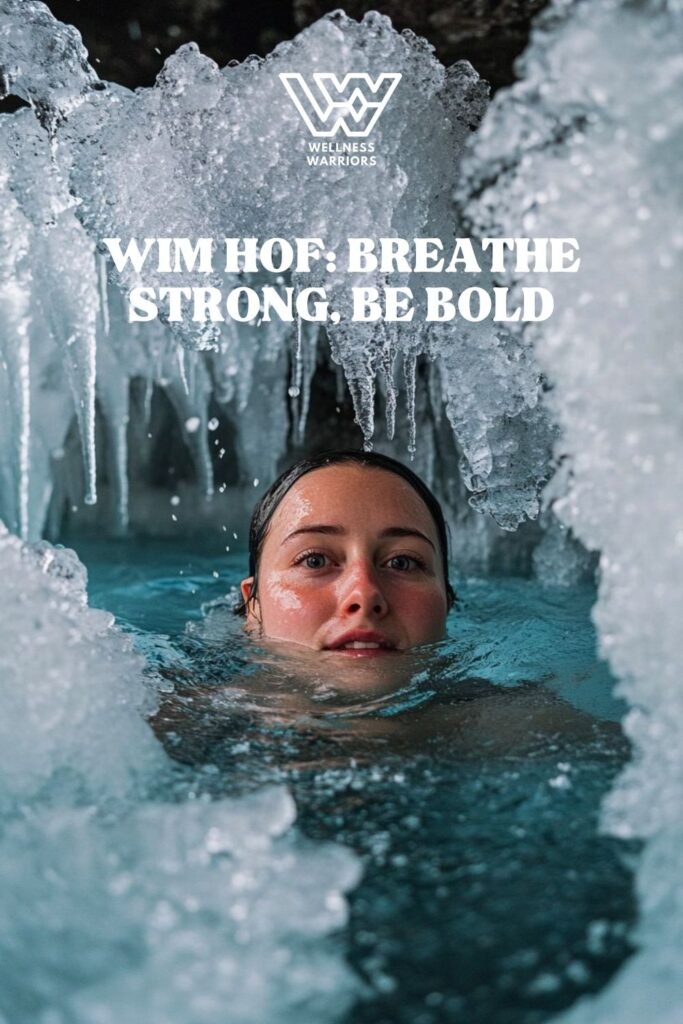

Born in 1959 in Sittard, Netherlands, Wim Hof’s extraordinary journey began at age 17 when he spontaneously jumped into a freezing canal. His life took a tragic turn in 1995 when his wife Marivelle-Maria died by suicide, leading him to find solace and healing in cold exposure and breathwork.
This personal tragedy transformed into triumph as Hof developed his revolutionary method, setting 26 world records including climbing Mount Kilimanjaro in shorts and running a half-marathon barefoot above the Arctic Circle. Known as “The Iceman,” Hof has since dedicated his life to teaching others how to harness their inner power through his unique combination of breathing techniques, cold exposure, and
mental commitment.
The Three Pillars of the Wim Hof Method
First Pillar: The Breathing Technique
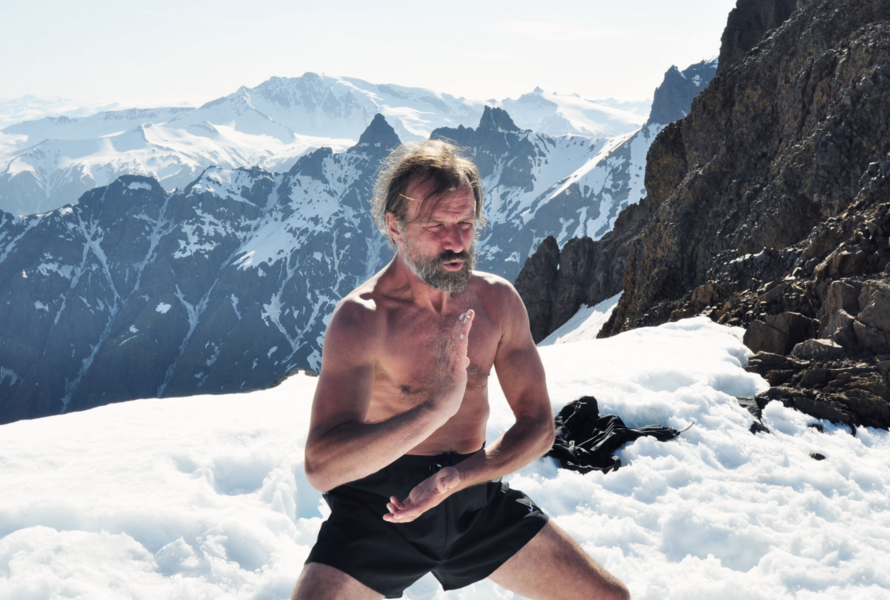
- Increased production of endorphins
- Enhanced mental focus
- Improved stress management
- Activation of the autonomic nervous system
Second Pillar: Cold Exposure
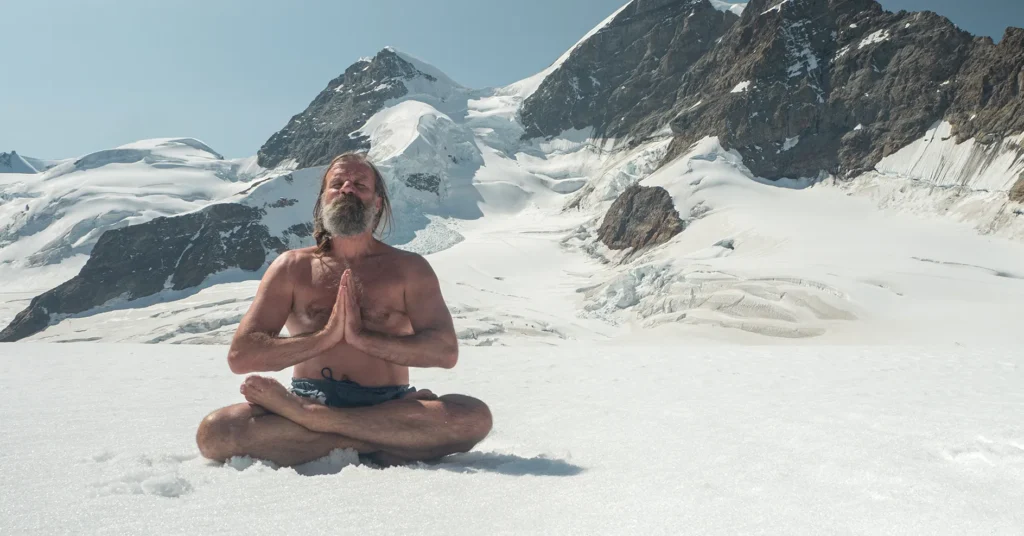
- Buildup of brown adipose tissue
- Improved cardiovascular responses
- Enhanced immune system function
- Resultant fat loss
- Better sleep quality
Third Pillar: Commitment/Mindset
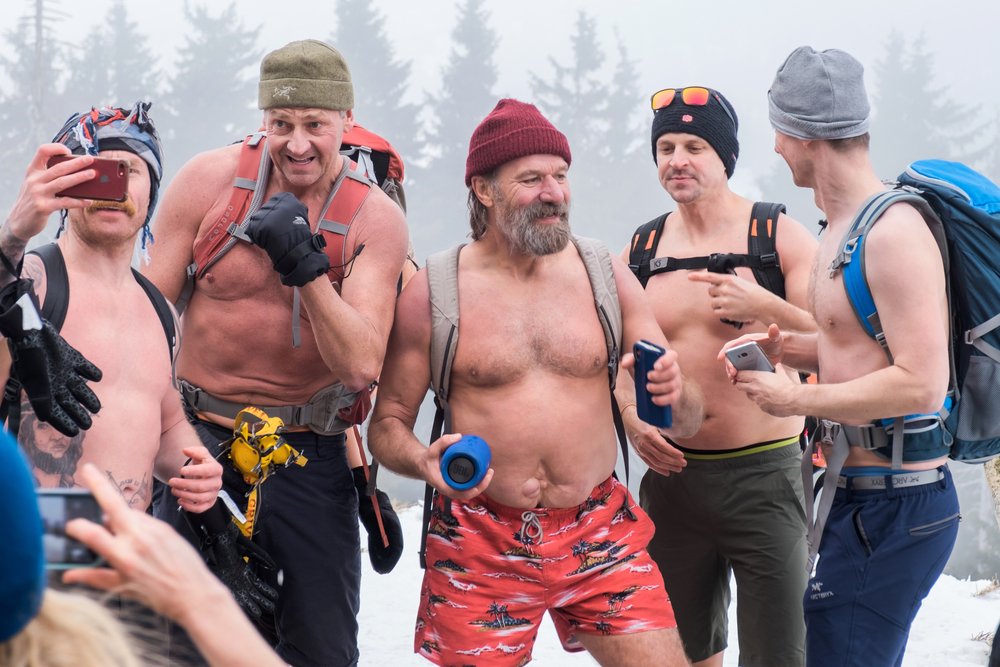
Scientific Validation and Research
The Groundbreaking Kox et al. Study
- A significant increase in anti-inflammatory mediators
- Reduced pro-inflammatory responses
- An augmented immune response
- Better control over stress levels
Additional Research Findings
- Improved respiratory muscle function
- Enhanced cardiovascular health
- Better hormone levels regulation
- Reduced depressive symptoms
Health Benefits and Applications
Physical Health Benefits
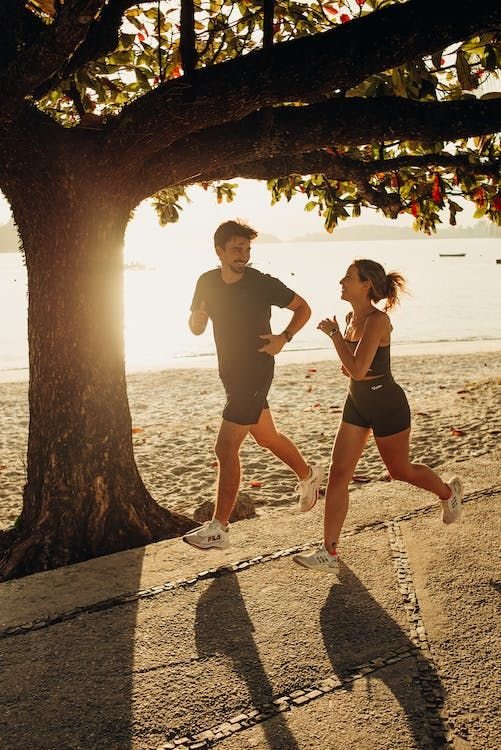
A fortified immune system
Improved cardiovascular function
Enhanced recovery from physical exertion
Better adaptation to natural environment stressors
Mental Health Benefits

Reduced stress levels
Better sleep quality
Enhanced mental focus
Production of feel-good chemicals
Improved emotional resilience
Safety Guidelines and Proper Practice
Important Precautions
- Starting gradually with cold exposure
- Practicing breathing exercises in a safe environment
- Being aware of possible adverse events
- Following recommended progression
Getting Started
- Start with short cold showers
- Practice breathing exercises while seated or lying down
- Gradually increase exposure time
- Monitor your body’s responses
- Maintain consistency in practice
Future Perspectives
Long-term effects on the entire body
Specific mechanisms behind the observed benefits
Applications for various health conditions
Optimal practice protocols
The Wim Hof Breathing Method: A Detailed Guide
The Basic Technique
Preparation Phase
Find a comfortable position (sitting or lying down)
Ensure you’re in a safe environment away from water or while driving
Wear comfortable clothing
Clear your mind and prepare to focus
The Breathing Cycle
Step 1: Power Breathing
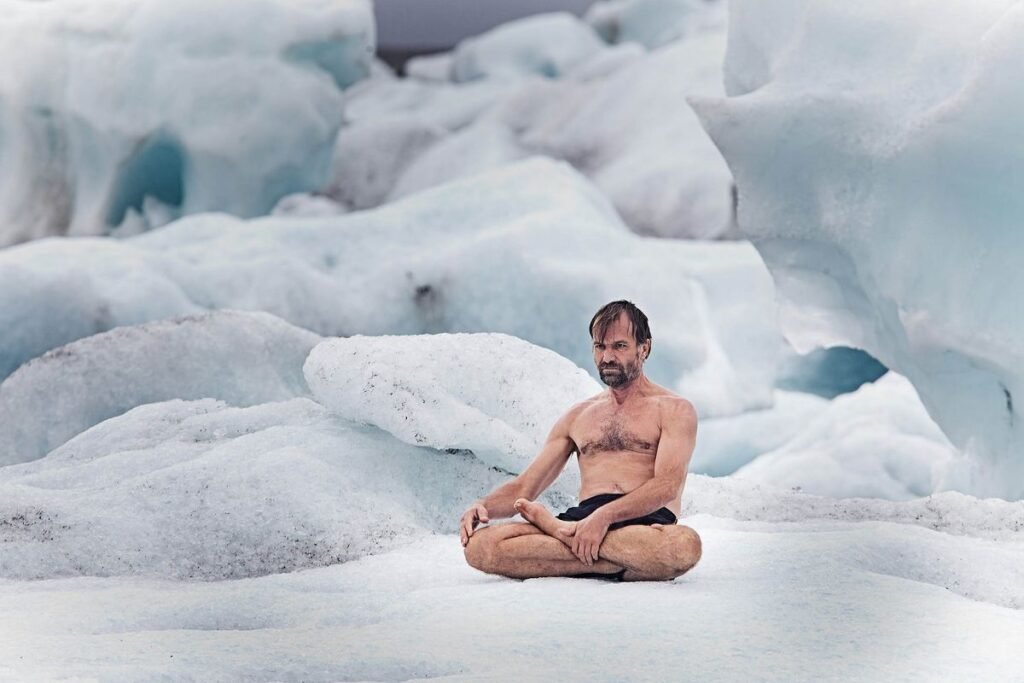
- Take a deep breath in through your nose or mouth
- Fill your belly by breathing diaphragmatically
- Let the breath go naturally without forcing it
- Repeat this cycle 30 times in a powerful but steady rhythm
Step 2: Retention Phase

- After the 30th breath, exhale normally and hold your breath
- Keep your lungs empty
- Hold until you feel the first natural urge to breathe
- This retention phase is crucial for allowing your body to adjust to changes in oxygen and CO2 levels
Step 3: Recovery Breath
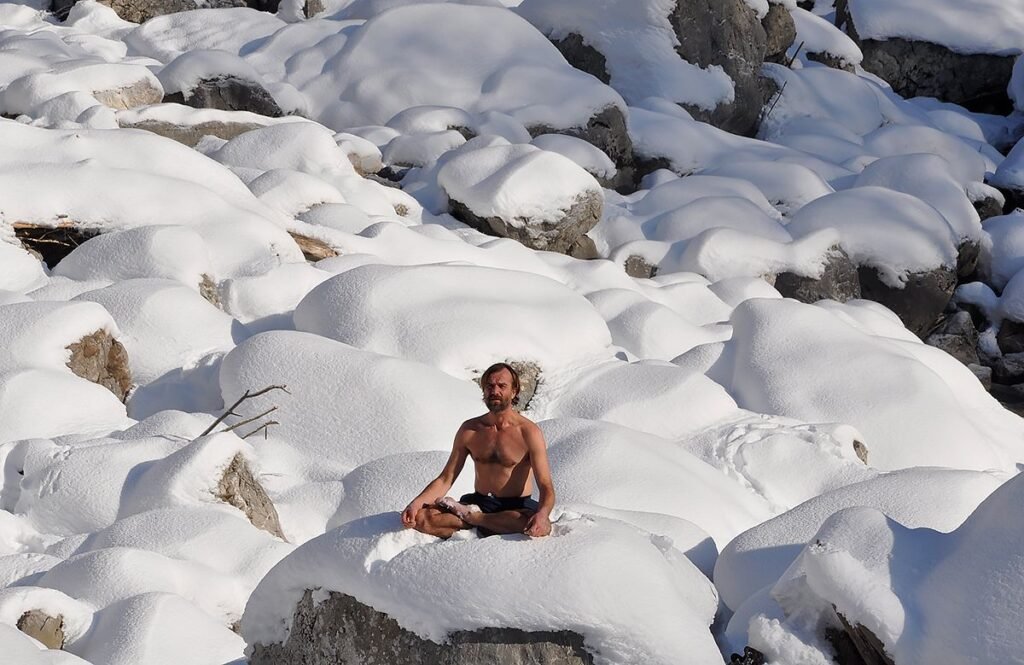
- When you need to breathe, take a deep full breath
- Hold this breath for 15 seconds
- Release the breath
- This completes one round
Step 4: Repetition
- Repeat the entire cycle 3-4 times
- Each round may result in longer breath retention times
- The entire session typically takes 15-20 minutes
READ MORE: Self-Care Ideas to Fight Depression!
Physiological Effects
Oxygen and CO2 Regulation
Increases oxygen levels in the body
Temporarily reduces CO2 levels
Creates a state of respiratory alkalosis
Leads to enhanced oxygen delivery to tissues
Impact on Nervous System
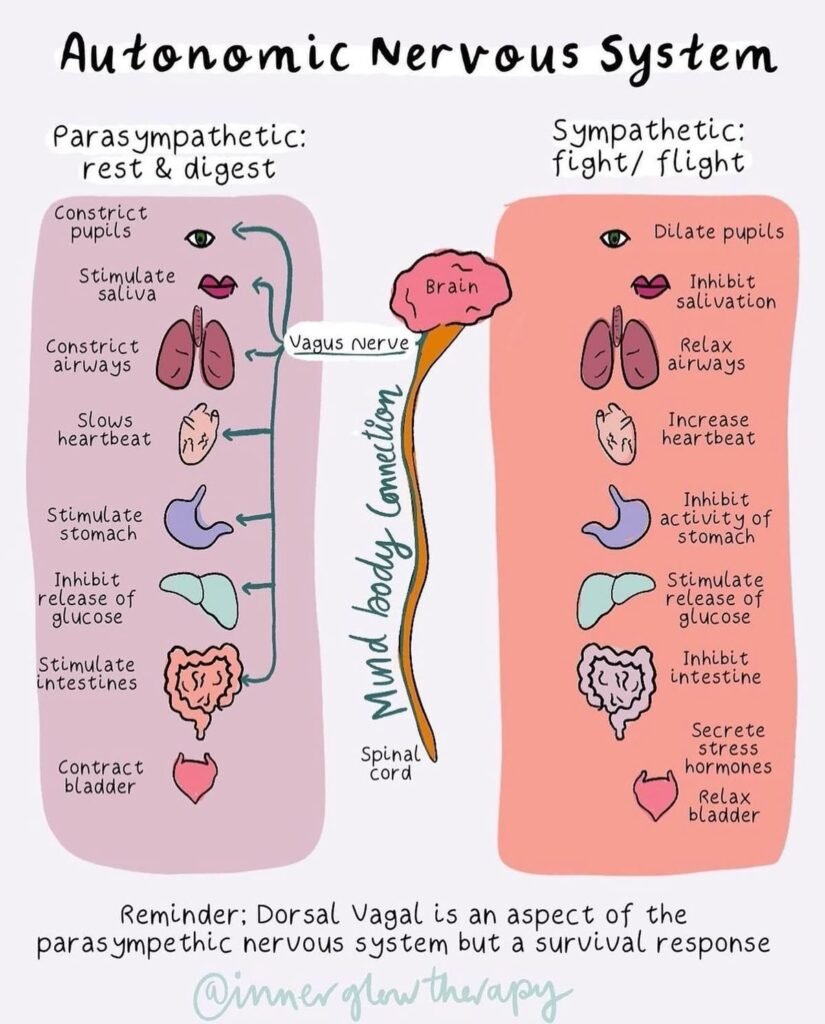
1. Sympathetic Activation: Triggers the “fight or flight” response Increases adrenaline release Enhances focus and energy
2. Triggers the “fight or flight” response
3. Increases adrenaline release
4. Enhances focus and energy
1. Parasympathetic Response: Promotes relaxation Reduces stress levels Helps balance autonomic responses
2. Promotes relaxation
3. Reduces stress levels
4. Helps balance autonomic responses
Safety Guidelines
Essential Precautions
1. Environment: Practice in a safe setting Avoid practicing near water Never practice while driving Always be seated or lying down
2. Practice in a safe setting
3. Avoid practicing near water
4. Never practice while driving
5. Always be seated or lying down
1. Physical Responses: Light-headedness is normal Tingling in fingers and feet may occur These sensations are temporary and harmless
2. Light-headedness is normal
3. Tingling in fingers and feet may occur
4. These sensations are temporary and harmless
Contraindications
- Epilepsy
- Cardiovascular issues
- Pregnancy
- Any serious health conditions
Advanced Practice Tips
Optimizing Your Practice
1. Breathing Rhythm: Maintain a steady pace Focus on full inhalations Allow natural, relaxed exhalations Pay attention to body signals
2. Maintain a steady pace
3. Focus on full inhalations
4. Allow natural, relaxed exhalations
5. Pay attention to body signals
1. Mental Focus: Stay present during the exercise Observe physical sensations Maintain a calm, focused state Use visualization if helpful
2. Stay present during the exercise
3. Observe physical sensations
4. Maintain a calm, focused state
5. Use visualization if helpful
Common Mistakes to Avoid
1. Breathing Errors: Over-breathing or forcing breaths Irregular rhythm Insufficient inhalation Forced exhalation
2. Over-breathing or forcing breaths
3. Irregular rhythm
4. insufficient inhalation
5. Forced exhalation
1. Practice Mistakes: Rushing the process Ignoring body signals Competing with retention times Practicing in unsafe conditions
2. Rushing the process
3. Ignoring body signals
4. Competing with retention times
5. Practicing in unsafe conditions
Benefits of Regular Practice
- Improved stress management
- Enhanced immune system function
- Better emotional regulation
- Increased energy levels
- Improved focus and mental clarity
Progression and Development
- Short-term Effects: Immediate sense of clarity Increased energy Improved mood Better breath control
- Immediate sense of clarity
- Increased energy
- Improved mood
- Better breath control
- Long-term Benefits: Enhanced stress resilience Stronger immune response Improved cold tolerance Better emotional regulation
- Enhanced stress resilience
- Stronger immune response
- Improved cold tolerance
- Better emotional regulation
How to Become a Wim Hof Method Teacher
Becoming a certified Wim Hof Method (WHM) instructor requires dedication, experience, and completion of a structured certification process. Here’s everything you need to know about embarking on this transformative journey.
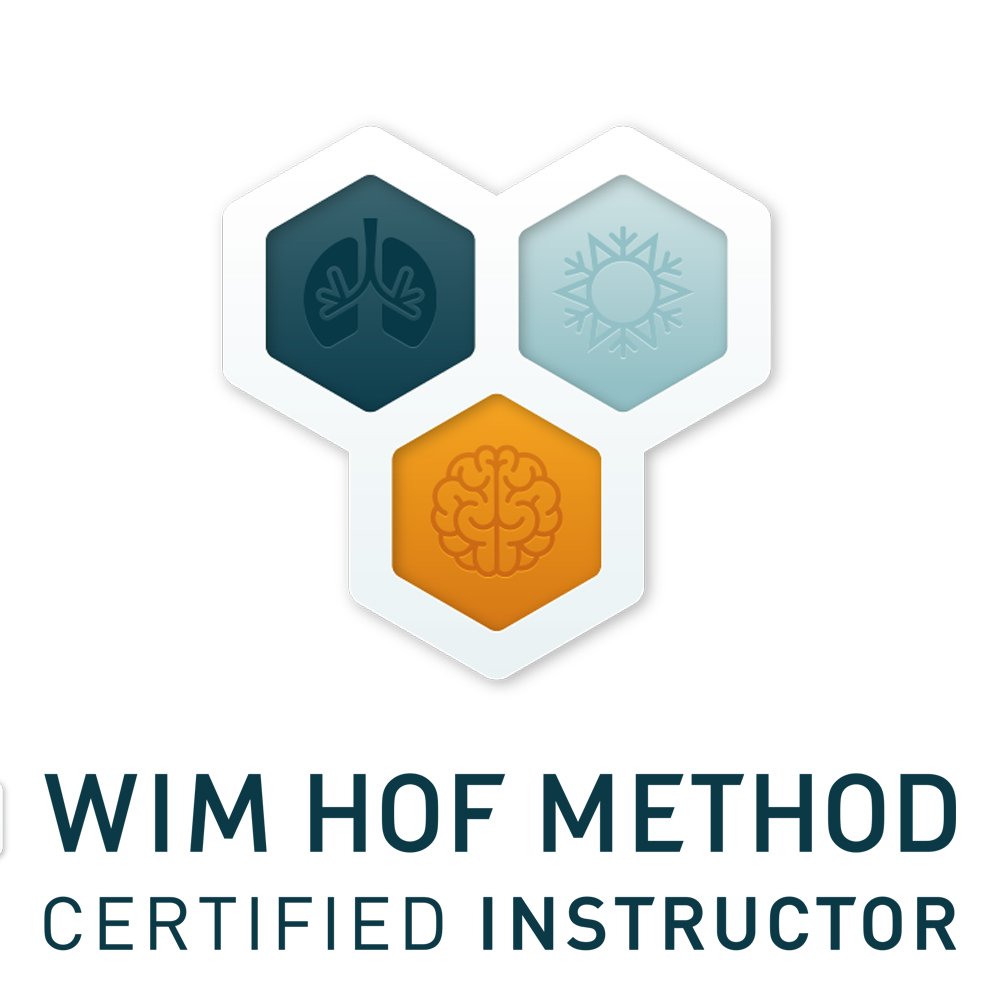
Prerequisites and Requirements
Before starting your journey, ensure you meet these basic requirements:
- At least two years of teaching, coaching, or similar experience
- English language proficiency, as all training is conducted in English
- Good health condition (those with serious health conditions, epilepsy, or cardiovascular issues should
- consult a doctor)
The Certification Process
1. Fundamentals Course
- Complete the WHM Fundamentals Online Course
- Master the basic principles and practices
- Build a strong foundation in the method
2. Instructor Training Program
The certification process consists of three modules:
Module I: Online Fundamentals
- Introduction to basic WHM principles
- Core breathing techniques
- Cold exposure fundamentals
Module II: Instructor Video Course
- Over 10 hours of video material
- Covers physiology, breathing, and safety
- Includes homework and practical exercises
Module III: In-Person Training
- 5-day intensive training
- Locations: Poland, Australia, or Mexico
- Practical evaluations and expert instruction
Professional Development
After certification, instructors can progress through different levels:
- Level 1 (Fundamentals) Instructor
- Ability to teach foundational practices
- Access to WHM Instructor Toolkit & Library
- Marketing support through official channels
- Advanced Instructor
- Requires completion of five-day Advanced Training
- Enables teaching of advanced activities
- Enhanced teaching capabilities
- Lead Instructor
- Highest level of certification
- Recognition for exceptional teaching excellence
- Opportunity to mentor other instructors
Business Opportunities
Certified instructors can benefit from:
- Growing market demand for WHM instruction
- Ability to set premium rates for specialized training
- Access to a global community of practitioners
- Opportunities for professional growth and development
Time and Commitment
The entire certification process must be completed within one year. This structured pathway ensures instructors are well-equipped to guide others through the transformative experiences of the Wim Hof Method while maintaining high standards of safety and professionalism. Remember that becoming a WHM instructor is not just about teaching techniques; it’s about embodying the method and helping others achieve their potential through breathing, cold exposure, and mindset training.

